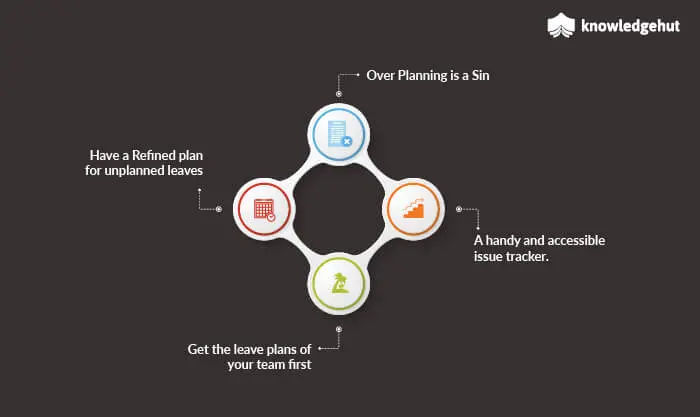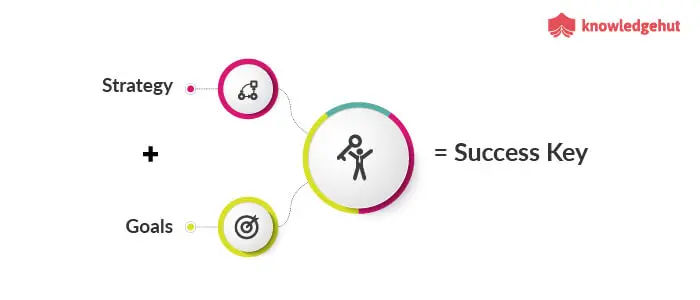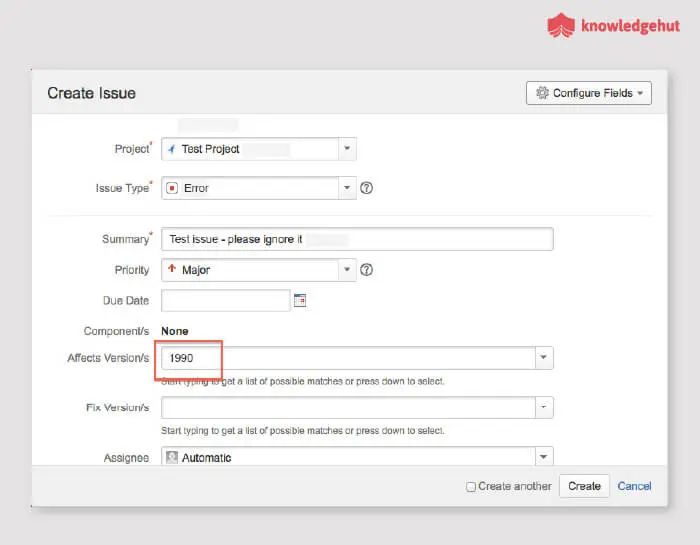- Blog Categories
- Project Management
- Agile Management
- IT Service Management
- Cloud Computing
- Business Management
- Business Intelligence
- Quality Engineer
- Cyber Security
- Career
- Big Data
- Programming
- Most Popular Blogs
- PMP Exam Schedule for 2024: Check PMP Exam Date
- Top 60+ PMP Exam Questions and Answers for 2024
- PMP Cheat Sheet and PMP Formulas To Use in 2024
- What is PMP Process? A Complete List of 49 Processes of PMP
- Top 15+ Project Management Case Studies with Examples 2024
- Top Picks by Authors
- Top 170 Project Management Research Topics
- What is Effective Communication: Definition
- How to Create a Project Plan in Excel in 2024?
- PMP Certification Exam Eligibility in 2024 [A Complete Checklist]
- PMP Certification Fees - All Aspects of PMP Certification Fee
- Most Popular Blogs
- CSM vs PSM: Which Certification to Choose in 2024?
- How Much Does Scrum Master Certification Cost in 2024?
- CSPO vs PSPO Certification: What to Choose in 2024?
- 8 Best Scrum Master Certifications to Pursue in 2024
- Safe Agilist Exam: A Complete Study Guide 2024
- Top Picks by Authors
- SAFe vs Agile: Difference Between Scaled Agile and Agile
- Top 21 Scrum Best Practices for Efficient Agile Workflow
- 30 User Story Examples and Templates to Use in 2024
- State of Agile: Things You Need to Know
- Top 24 Career Benefits of a Certifed Scrum Master
- Most Popular Blogs
- ITIL Certification Cost in 2024 [Exam Fee & Other Expenses]
- Top 17 Required Skills for System Administrator in 2024
- How Effective Is Itil Certification for a Job Switch?
- IT Service Management (ITSM) Role and Responsibilities
- Top 25 Service Based Companies in India in 2024
- Top Picks by Authors
- What is Escalation Matrix & How Does It Work? [Types, Process]
- ITIL Service Operation: Phases, Functions, Best Practices
- 10 Best Facility Management Software in 2024
- What is Service Request Management in ITIL? Example, Steps, Tips
- An Introduction To ITIL® Exam
- Most Popular Blogs
- A Complete AWS Cheat Sheet: Important Topics Covered
- Top AWS Solution Architect Projects in 2024
- 15 Best Azure Certifications 2024: Which one to Choose?
- Top 22 Cloud Computing Project Ideas in 2024 [Source Code]
- How to Become an Azure Data Engineer? 2024 Roadmap
- Top Picks by Authors
- Top 40 IoT Project Ideas and Topics in 2024 [Source Code]
- The Future of AWS: Top Trends & Predictions in 2024
- AWS Solutions Architect vs AWS Developer [Key Differences]
- Top 20 Azure Data Engineering Projects in 2024 [Source Code]
- 25 Best Cloud Computing Tools in 2024
- Most Popular Blogs
- Company Analysis Report: Examples, Templates, Components
- 400 Trending Business Management Research Topics
- Business Analysis Body of Knowledge (BABOK): Guide
- ECBA Certification: Is it Worth it?
- How to Become Business Analyst in 2024? Step-by-Step
- Top Picks by Authors
- Top 20 Business Analytics Project in 2024 [With Source Code]
- ECBA Certification Cost Across Countries
- Top 9 Free Business Requirements Document (BRD) Templates
- Business Analyst Job Description in 2024 [Key Responsibility]
- Business Analysis Framework: Elements, Process, Techniques
- Most Popular Blogs
- Best Career options after BA [2024]
- Top Career Options after BCom to Know in 2024
- Top 10 Power Bi Books of 2024 [Beginners to Experienced]
- Power BI Skills in Demand: How to Stand Out in the Job Market
- Top 15 Power BI Project Ideas
- Top Picks by Authors
- 10 Limitations of Power BI: You Must Know in 2024
- Top 45 Career Options After BBA in 2024 [With Salary]
- Top Power BI Dashboard Templates of 2024
- What is Power BI Used For - Practical Applications Of Power BI
- SSRS Vs Power BI - What are the Key Differences?
- Most Popular Blogs
- Data Collection Plan For Six Sigma: How to Create One?
- Quality Engineer Resume for 2024 [Examples + Tips]
- 20 Best Quality Management Certifications That Pay Well in 2024
- Six Sigma in Operations Management [A Brief Introduction]
- Top Picks by Authors
- Six Sigma Green Belt vs PMP: What's the Difference
- Quality Management: Definition, Importance, Components
- Adding Green Belt Certifications to Your Resume
- Six Sigma Green Belt in Healthcare: Concepts, Benefits and Examples
- Most Popular Blogs
- Latest CISSP Exam Dumps of 2024 [Free CISSP Dumps]
- CISSP vs Security+ Certifications: Which is Best in 2024?
- Best CISSP Study Guides for 2024 + CISSP Study Plan
- How to Become an Ethical Hacker in 2024?
- Top Picks by Authors
- CISSP vs Master's Degree: Which One to Choose in 2024?
- CISSP Endorsement Process: Requirements & Example
- OSCP vs CISSP | Top Cybersecurity Certifications
- How to Pass the CISSP Exam on Your 1st Attempt in 2024?
- Most Popular Blogs
- Best Career options after BA [2024]
- Top Picks by Authors
- Top Career Options & Courses After 12th Commerce in 2024
- Recommended Blogs
- 30 Best Answers for Your 'Reason for Job Change' in 2024
- Recommended Blogs
- Time Management Skills: How it Affects your Career
- Most Popular Blogs
- Top 28 Big Data Companies to Know in 2024
- Top Picks by Authors
- Top Big Data Tools You Need to Know in 2024
- Most Popular Blogs
- Web Development Using PHP And MySQL
- Top Picks by Authors
- Top 30 Software Engineering Projects in 2024 [Source Code]
- More
- Tutorials
- Practise Tests
- Interview Questions
- Free Courses
- Agile & PMP Practice Tests
- Agile Testing
- Agile Scrum Practice Exam
- CAPM Practice Test
- PRINCE2 Foundation Exam
- PMP Practice Exam
- Cloud Related Practice Test
- Azure Infrastructure Solutions
- AWS Solutions Architect
- AWS Developer Associate
- IT Related Pratice Test
- ITIL Practice Test
- Devops Practice Test
- TOGAF® Practice Test
- Other Practice Test
- Oracle Primavera P6 V8
- MS Project Practice Test
- Project Management & Agile
- Project Management Interview Questions
- Release Train Engineer Interview Questions
- Agile Coach Interview Questions
- Scrum Interview Questions
- IT Project Manager Interview Questions
- Cloud & Data
- Azure Databricks Interview Questions
- AWS architect Interview Questions
- Cloud Computing Interview Questions
- AWS Interview Questions
- Kubernetes Interview Questions
- Web Development
- CSS3 Free Course with Certificates
- Basics of Spring Core and MVC
- Javascript Free Course with Certificate
- React Free Course with Certificate
- Node JS Free Certification Course
- Data Science
- Python Machine Learning Course
- Python for Data Science Free Course
- NLP Free Course with Certificate
- Data Analysis Using SQL
- Home
- Blog
- Project Management
- A Beginner’s Guide to Project Management – Part 2
A Beginner’s Guide to Project Management – Part 2
Updated on Jul 24, 2018 | 3 min read | 10.3k views
Share:
In my previous post “A Beginner’s guide to Project Management – Part 1”, I spoke about 5 tips that can make your life easier if you are entrusted with the role of project manager during the initiation phase of the project. In case you would like to go through that article again, here is the link.
In this second post, I am going to share some tips to save time and improve efficiency and hence having a better chance at success in the project planning phase.
I am intentionally going sequentially as per PMBOK® guide whereby Initiation precedes, planning, then execution followed by control and closure. In the latest 2017 edition of PMBoK®, i.e. the 6th version of PMBoK® guide from PMI® [Project Management Institute], there are 24 processes within the Planning phase.
I am not going to delve into each and every process and then try to explain to you because this post has been started with the thought in mind that you are well versed with the theory of project management, and you are looking for bullets to help save your time and peace of mind.
In short, idiot’s guide to project management! ☺
Alright. Let’s begin.
Planning is the root cause of evil:
Yes, you read that right. We the project management community gets stressed with the fact that there are too many unknowns in your project leading to instability, the budgets and business forecasts can shrink anytime, the team can go on unplanned leaves and what not!
This causes us to plan more and adopt multiple tools to reduce the volatility in our project which in turn increases the paperwork, documentary submissions, compliance requirements and above all, a very stiff environment that hampers team productivity and bonding.
So to cut the evil should we stop planning?
Definitely not!
But there has to be a threshold to it. And that relates to my first tip in planning section, numerically numbered as Tip 6 since first 5 tips were covered in post 1.
Master Right Skills & Boost Your Career
Avail your free 1:1 mentorship session

Tip # 6: Over Planning is a Sin
If you are starting a brand new project with no history then create a broad overall plan for the project and get it reviewed with stakeholders but then do not start planning entire 24 processes right from the word go.
- You should have a broad level [one page max] plan for each of the knowledge area: Quality, resource, cost, schedule, communication, risk, procurement etc. Just a high-level summary of what you plan to do in that particular field
If you make the mistake of planning each and everything in detail right from the word go then you will end up:
- Wasting your time in rework
- Irritating your team by forcing to follow “Your” plan instead of what’s the ground reality
- Demotivated workforce that is scared to talk to you

Tip # 7: Have weekly, monthly, quarterly goals clearly defined.

If you are saving your time by not over planning then you should utilize this opportunity to find out your customer and business owners’ expectations and line them up in weekly, monthly and quarterly goals fashion.These goals need not be hard and set in concrete but laying of a foundation for your entire project team to starting wrapping their minds around them.
How do these goals help?
The benefit is since we are not reviewing detailed project plan with the stakeholders at the beginning of the project so sharing with them:
- A broad project plan and
- Your short-term, mid-term goals
Helps them give confidence that you are on board with them on the same ship.
Tip # 8: Get the leave plans of your team first

This tip is based on my professional experience whereby I had burnt my fingers quite a few times in my projects. The problem was my plans were laid bare by the leaves taken by the key personnel of my team on multiple occasions.
If I had known that some of the people were going on long leaves then I can either modify my plans or allocate some other person. While leave planning and allocation is part and parcel of project execution, but as soon as I am allocated to a project and I have a team assigned to me, the first thing I do is to submit their immediate leave plans for at least 1 month. And make it a habit to have that clarity until the project closes.
Tip # 9: Have a Refined plan for unplanned leaves
In one of the projects I had under my stewardship, the improvement plans to deliver something more meaningful above and beyond what is committed to the client were big flops because every time someone’s unplanned long leave came into the picture.
While a couple of instances were beyond anyone’s control but in a couple of other instances, the erring team member had intentionally hidden this piece of information for me, only to burst on my face in the time of crucial need.
The trick to bringing this behavior down to 0, as per my experience is as follows:
- Gain trust of the team members that you are not against genuine and planned leaves. And the best way to gain that trust is through “Action”. Because action speaks louder than words.
- Explain to the team the harm it caused to the entire team [not only the project] due to unplanned leaves.
- Let off first few incidents with a polite face to face discussion followed by a written note as an official note.
- Discuss those incidents [without naming the person] in team meetings and help the entire team understand the impact of those actions.
In spite of all this, there will be people who will refuse to cooperate with you and leave you high and dry with unplanned leaves, for those cases, you need to have an official reform mechanism that ranges from personal improvement plan to involving HR.
But believe me when I say that if your team genuinely feels that you will not stop them from going on leaves if they are fair and open with you then the cases of unplanned leaves will come down drastically in your team. That is why first thing I do is to get the leaves plans of the team sorted out as soon as I take over a project.
Tip # 10: A handy and accessible issue tracker.

Speak to your seniors, ex-managers and existing team members on their experience of handling or working on similar projects. Document the issues that they faced and mark them accordingly. Some people confuse it with risk register but that is a different artifact.
- Issue tracker is an ongoing document on the current issues being faced by the team or the ones that are unsolved since long time.
- Document the actions taken so far by the authorities so far on each issue and what are the next expected actions by whom.
- Have a clear-cut ETA on each of those action items
- Regularly review those issues every fortnight until the project goes into cruise mode; then you can move the meeting to monthly or quarterly.
The benefits of having issue tracker handy and accessible for everyone in your team allows everyone to be a stakeholder in your project. If you keep it locked only for you to access then rest assured you will not get the correct visibility. Let your team members add issues to the tracker if they sense something is wrong. You can spend a few minutes to review those entries and weed them out if they are unnecessary but the benefit of being 100% sure you earn by this practice is valuable.
So these are the top 5 tips for you in the planning phase of project management. In total, I have shown you 10 tips so far.
In my next post, I will come back with more such tips and tricks to help you out. So stay tuned and do leave a comment.
All the best !!
Top Cities where KnowledgeHut Conduct Project Management Certification Training Course Online
Get Free Consultation
By submitting, I accept the T&C and
Privacy Policy
Ready to master Project Management Career in 2025?


